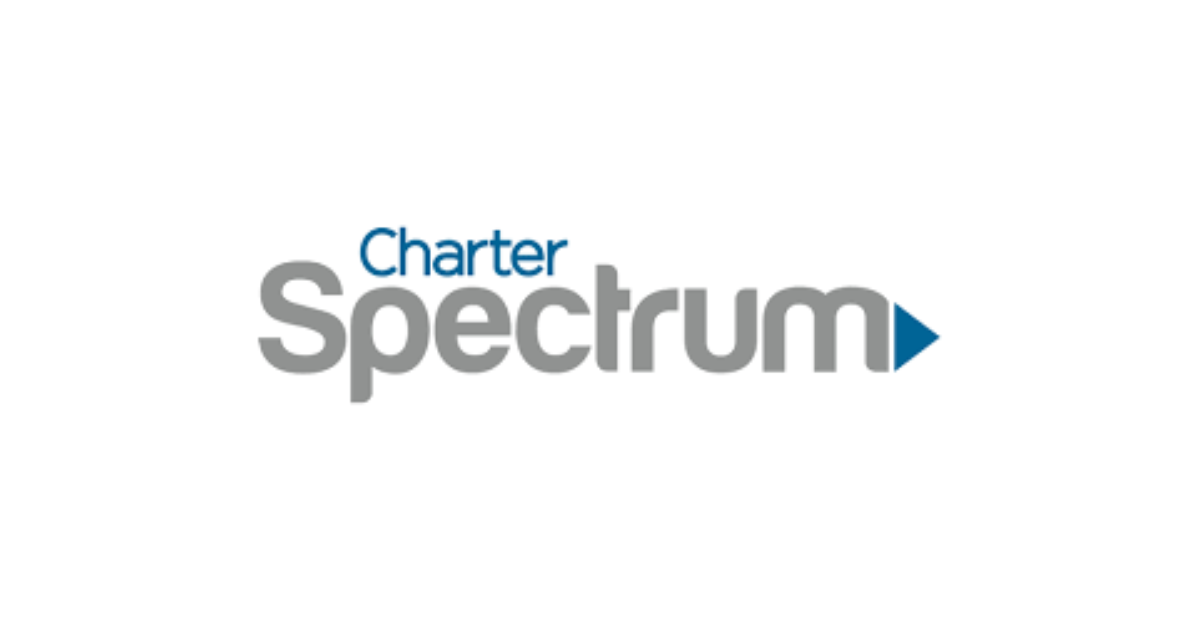Charter Communications, operating under the brand Spectrum, is a leading telecommunications and mass media company founded in 1980 by Charles H. Leonard in Barry County, Michigan, and officially incorporated in 1993 by Barry Babcock, Jerald Kent, and Howard Wood. Headquartered in Stamford, Connecticut, Charter has grown from a regional cable provider into the largest cable operator in the United States, serving over 32 million customers across 41 states by early 2025. Known for its comprehensive offerings, including high-speed internet, cable television, mobile services through Spectrum Mobile, voice solutions, and business services, the company has become a powerhouse in connectivity. Its strategic acquisitions, such as the $78.7 billion merger with Time Warner Cable and Bright House Networks in 2016, and innovations like DOCSIS 3.1, Xumo Stream Boxes, and rural broadband investments, have solidified its market leadership. Despite facing challenges like financial struggles, regulatory hurdles, and competition from giants like Comcast and Verizon, Charter’s commitment to customer satisfaction, technological advancement, and expansive infrastructure has earned it numerous awards and recognitions, positioning it as a model of resilience and innovation in the telecom industry.
Company Information
Company Name: Charter (Spectrum)
Founder Name: Charles H. Leonard (initial founder), later consolidated by Barry Babcock, Jerald Kent, and Howard Wood in 1993
Founded Year: 1980 (original Charter systems), officially incorporated in 1993
Headquarters: Stamford, Connecticut, USA
Products:
- Cable television equipment, including set-top boxes and DVRs
- High-speed internet modems and routers
- Mobile devices and accessories available through Spectrum Mobile
- Xumo Stream Boxes designed for seamless streaming and live TV integration
Services:
- Cable television offerings, including Spectrum TV with on-demand content and mobile streaming capabilities
- High-speed internet access through Spectrum Internet, featuring gigabit speeds and reliable connectivity
- Mobile phone services under Spectrum Mobile, utilizing Verizon’s network for nationwide coverage
- Voice services, encompassing both traditional landline and Voice over IP (VoIP) solutions
- Comprehensive business solutions, including internet, phone, and video services tailored for small, medium, and large enterprises
- Advertising and marketing services through Spectrum Reach, targeting local and national audiences
- Local news and sports programming produced and distributed via Spectrum Networks
Competitors:
- Comcast (Xfinity)
- AT&T
- Verizon Fios
- Cox Communications
- Dish Network
- DirecTV
- T-Mobile
- Frontier Communications
Company History & Growth:
- Early Beginnings (1980–1992):
- Charter Communications originated in 1980 when Charles H. Leonard established Charter CATV systems in Barry County, Michigan, focusing on delivering cable television services to rural areas where traditional broadcast signals were weak.
- Over the next decade, the company expanded through a series of small mergers with regional operators like Spectrum Communications, building a foundation in cable infrastructure and customer service that would later define its brand.
- Formal Incorporation and Rapid Expansion (1993–2009):
- In 1993, a pivotal shift occurred when Barry Babcock, Jerald Kent, and Howard Wood consolidated various Charter systems into a single entity, officially incorporating Charter Communications in Missouri with its headquarters initially in St. Louis.
- The company pursued an aggressive acquisition strategy, purchasing Crown Media Holdings and Cable South in the mid-1990s, which expanded its subscriber base and geographic reach.
- In 1997, Charter partnered with EarthLink to offer high-speed internet, capitalizing on the growing demand for online connectivity. By 2001, it collaborated with MSN to enhance broadband content delivery, and in 2008, it acquired cable franchises from Wave Broadband, further strengthening its market position in the western U.S.
- Major Acquisitions and Rebranding (2010–2016):
- A significant turning point came in 1999 when Microsoft co-founder Paul Allen acquired a controlling interest, injecting substantial capital and strategic vision until he sold his stake in 2009. This period saw Charter weather financial turbulence but emerge leaner and more focused.
- In 2012, Thomas Rutledge assumed the role of CEO, relocating the headquarters to Stamford, Connecticut, to position the company closer to major financial and media hubs. Under his leadership, Charter launched the Spectrum brand in 2014, rebranding to unify its services and improve customer recognition.
- The most transformative moment came in 2016 when Charter completed a monumental $78.7 billion acquisition of Time Warner Cable and Bright House Networks, instantly making it the largest cable operator in the United States by subscriber count and cementing its status as a telecom powerhouse.
- Modern Era and Digital Transformation (2017–2025):
- Post-acquisition, Charter focused on integrating its vast network, introducing Spectrum Mobile in 2018 as the first major cable operator to offer mobile services at scale, leveraging Verizon’s network for reliability.
- The company invested heavily in network upgrades, rolling out DOCSIS 3.1 technology to deliver gigabit internet speeds and later exploring fiber-optic expansions. In 2022, it partnered with Comcast on a streaming joint venture, signaling its commitment to the future of media consumption.
- By 2024 and into early 2025, Charter continued to innovate with rural broadband initiatives, customer service enhancements, and the launch of advanced products like the Xumo Stream Box, positioning itself as a leader in both traditional and digital connectivity.
Challenges & Lessons:
- Financial Struggles: In the late 2000s, Charter faced near-bankruptcy due to heavy debt from acquisitions and economic downturns. This taught the company the critical need for financial restructuring, prudent debt management, and diversified revenue streams to ensure long-term stability.
- Regulatory Hurdles: The 2016 acquisitions triggered intense scrutiny from the Federal Communications Commission (FCC) and antitrust regulators. Charter learned to navigate complex regulatory landscapes by demonstrating consumer benefits and committing to network investments, a lesson in balancing growth with compliance.
- Labor Disputes: Between 2017 and 2022, Spectrum workers staged strikes over wages and benefits, highlighting the importance of proactive labor relations, transparent communication, and fair compensation to maintain workforce morale and productivity.
- Market Competition: Fierce rivalry from giants like Comcast and Verizon pushed Charter to constantly innovate and enhance customer retention strategies, underscoring the need for agility and differentiation in saturated markets.
- Customer Satisfaction: Early in its growth, Charter faced criticism for service reliability and pricing. This spurred a company-wide commitment to network upgrades, transparent pricing, and customer-first initiatives, proving that reputation recovery requires sustained effort and accountability.
Innovations:
- Spectrum Mobile Launch: In 2018, Charter became the first major cable provider to offer mobile services, using Verizon’s network to provide competitive wireless plans, disrupting the telecom market.
- DOCSIS 3.1 Deployment: In 2017, Charter rolled out DOCSIS 3.1 technology across its network, enabling gigabit internet speeds and setting a new standard for home and business connectivity.
- Xumo Stream Box Introduction: Launched in 2023, the Xumo Stream Box integrated live TV, on-demand content, and streaming apps into a single platform, enhancing user experience and competing with smart TV ecosystems.
- Spectrum Internet Assist: Introduced to bridge the digital divide, this program offers low-cost, high-speed internet to low-income households and students, demonstrating social responsibility alongside business growth.
- WiFi 6 Routers: In 2020, Charter pioneered the deployment of WiFi 6 routers, improving home network performance, security, and capacity to meet the demands of modern households with multiple connected devices.
Achievements or Milestones:
- Largest U.S. Cable Operator: In 2016, Charter’s acquisition of Time Warner Cable and Bright House Networks made it the largest cable operator in the U.S. by subscriber count, surpassing Comcast.
- Subscriber Growth: By 2022, Charter served over 32 million customers across 41 states, a testament to its expansive reach and customer loyalty.
- Spectrum Mobile Success: Reached 10 million mobile lines by early 2025, making it the fastest-growing mobile provider among cable operators and a serious contender in wireless markets.
- Infrastructure Investment: Invested more than $25 billion between 2016 and 2020 in broadband infrastructure, significantly expanding rural and underserved areas’ access to high-speed internet.
- Streaming Innovation: Launched Spectrum TV Stream and Stream Latino in 2024, catering to diverse audiences and reinforcing its position in the evolving media landscape.
Recognitions & Awards:
- Fortune 500 Ranking: Placed No. 70 on the 2019 Fortune 500 list based on total revenue, reflecting its economic impact and scale.
- J.D. Power Awards: Won multiple J.D. Power awards for customer satisfaction in mobile services in 2024, highlighting its commitment to quality.
- Cablefax Top Ops Awards: Received the Product Launch of the Year award in 2024 for the Xumo Stream Box, recognizing its innovation in consumer technology.
- Forbes Recognition: Named one of America’s Best-in-State Employers in multiple states in 2024, showcasing its strong workplace culture.
- Internet Telephony Excellence Awards: Honored in 2020 and 2021 for its voice services, affirming its leadership in telecommunications solutions.
Recap of the company’s success story and achievements:
Charter Communications, now synonymous with Spectrum, has evolved from a modest cable provider founded in 1980 by Charles H. Leonard into a telecom titan by early 2025. Consolidated in 1993 by Barry Babcock, Jerald Kent, and Howard Wood, it grew through strategic acquisitions, culminating in the transformative 2016 merger with Time Warner Cable and Bright House Networks for $78.7 billion. Based in Stamford, Connecticut, Spectrum now serves over 32 million customers with cable TV, high-speed internet, mobile, and voice services across 41 states. Its innovations, like Spectrum Mobile, DOCSIS 3.1, and Xumo Stream Boxes, along with a $25 billion investment in rural broadband, have solidified its leadership. Overcoming financial crises, regulatory challenges, and competition, Charter’s focus on customer satisfaction and digital transformation has yielded milestones like becoming the fastest-growing mobile provider and earning top industry awards. Its journey exemplifies how vision, resilience, and innovation can create a lasting legacy in connectivity.
What entrepreneurs can learn from this company’s success story:
Entrepreneurs can draw profound lessons from Charter’s trajectory. First, bold acquisitions can accelerate growth, but require meticulous financial and regulatory planning, as seen in the 2016 mergers. Second, continuous innovation—such as launching Spectrum Mobile and upgrading to gigabit speeds—ensures relevance in competitive markets. Third, overcoming adversity, like bankruptcy threats and labor strikes, demands resilience, strategic restructuring, and stakeholder engagement. Fourth, investing in customer experience and infrastructure, as Charter did with rural broadband, builds long-term trust and market dominance. Finally, forming strategic partnerships, like with Verizon for mobile services, can fill gaps and enhance offerings. Charter’s story teaches the importance of balancing short-term challenges with long-term vision, leveraging technology to disrupt industries, and maintaining a customer-centric approach. Entrepreneurs should also prioritize adaptability, transparency, and a strong corporate culture to navigate disruptions, ensuring sustained success in a dynamic landscape. Charter proves that strategic risk-taking, backed by execution, can transform a regional player into a global leader.



